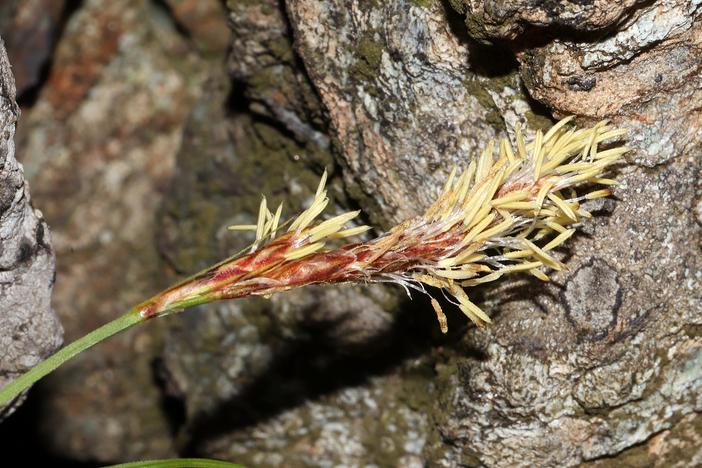Fringed Sedge
(Carex fimbriata)
Fringed Sedge (Carex fimbriata)
/
/

Umberto Ferrando
CC BY 2.0
Image By:
Umberto Ferrando
Recorded By:
Copyright:
CC BY 2.0
Copyright Notice:
Photo by: Umberto Ferrando | License Type: CC BY 2.0 | License URL: https://creativecommons.org/licenses/by/2.0 | Uploader: Ser Amantio di Nicolao | Publisher: Wikipedia Commons











Estimated Native Range
Summary
Carex fimbriata, commonly known as Fringed Sedge, is a perennial herbaceous plant that forms dense tussocks and is native to moist meadows, stream banks, and wet woodlands in parts of Europe, including France, Italy, and Switzerland. It typically grows to a height of 20-60 cm (8-24 inches), with a similar spread. Fringed Sedge has narrow, grass-like leaves and produces inconspicuous brown flower spikes in late spring to early summer. The plant’s foliage remains attractive throughout the growing season, providing texture to garden compositions.
Fringed Sedge is valued for its ability to thrive in wet conditions and is often used in rain gardens, around ponds, and in other moist or waterlogged sites. It is also suitable for naturalistic plantings and as a ground cover in shaded areas. Carex fimbriata prefers consistently moist soils and can tolerate partial to full shade. While generally low-maintenance, it may require division every few years to maintain vigor. This sedge is not commonly affected by pests or diseases, but can suffer in prolonged dry conditions without adequate moisture.CC BY-SA 4.0
Fringed Sedge is valued for its ability to thrive in wet conditions and is often used in rain gardens, around ponds, and in other moist or waterlogged sites. It is also suitable for naturalistic plantings and as a ground cover in shaded areas. Carex fimbriata prefers consistently moist soils and can tolerate partial to full shade. While generally low-maintenance, it may require division every few years to maintain vigor. This sedge is not commonly affected by pests or diseases, but can suffer in prolonged dry conditions without adequate moisture.CC BY-SA 4.0
Plant Description
- Plant Type: Grass
- Height: 1-2 feet
- Width: 1-2 feet
- Growth Rate: Moderate
- Flower Color: N/A
- Flowering Season: Spring, Summer
- Leaf Retention: Evergreen
Growth Requirements
- Sun: Part Shade, Full Shade
- Water: Medium, High
- Drainage: Medium, Slow
Common Uses
Bank Stabilization, Border Plant, Erosion Control, Low Maintenance, Street Planting, Water Garden
Natural Habitat
Moist meadows, stream banks, and wet woodlands in France, Italy, and Switzerland
Other Names
Common Names: Border Sedge
Scientific Names: , Carex fimbriata, Carex ferruginea var. fimbriata, Carex fuliginosa, Carex hispida, Carex hispidula, Carex pilulifera var. hispidula,
GBIF Accepted Name: